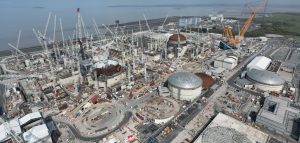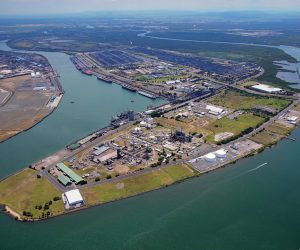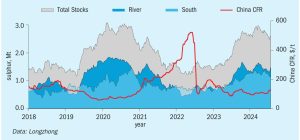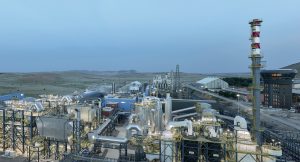
Nuclear powered ammonia
With green ammonia from renewable energy facing cost hurdles to adoption, thoughts have turned to using nuclear energy as a carbon free alternative.

With green ammonia from renewable energy facing cost hurdles to adoption, thoughts have turned to using nuclear energy as a carbon free alternative.

The nitric acid industry has made great strides in reducing nitrous oxide emissions over the past few decades, but emissions from agriculture due to nitrogen fertilizers remain a problematic source of N2 O in the atmosphere.

Demand for nitrates has rebounded after a difficult period following the dislocations caused by the war in Ukraine, with UAN in particular seeing rapid growth. Technical ammonium nitrate is also growing on the back of increased mining activity.

This year will be the 40th Sulphur – now Sulphur + Sulphuric Acid – Conference to be held. From its beginnings in Canada to this year’s meeting at the Hyatt Regency hotel in Barcelona, much has changed, but its mission – to be an essential annual forum for the global sulphur and acid community – remains the same.
In its most recent interim report, published on August 15, renewable energy developer Ørsted said that it was abandoning the FlagshipONE renewable methanol project because the anticipated market for green methanol as a marine fuel had not materialised as quickly as expected. The strategic decision comes nearly two years after final investment decision (FID) on the project.
Shell Deutschland has taken a final investment decision (FID) to progress REFHYNE II, a 100 MW renewable proton-exchange membrane (PEM) hydrogen electrolyser at the Shell Energy and Chemicals Park Rheinland in Germany. Using renewable electricity, REFHYNE II is expected to produce up to 44 t/d of renewable hydrogen to partially decarbonise site operations. The electrolyser is scheduled to begin operating in 2027. Renewable hydrogen from REFHYNE II will be used at the Shell Energy and Chemicals Park to produce energy products such as transport fuels with a lower carbon intensity. Using renewable hydrogen at Shell Rheinland will help to further reduce Scope 1 and 2 emissions at the facility. In the longer term, renewable hydrogen from REFHYNE II could be directly supplied to help lower industrial emissions in the region as customer demand evolves.

In the last two years there have been significant changes to the level and location of sulphur inventory, which has caused swings in short-term supply availability. Inventory plays a necessary role in balancing the sulphur market but exactly when, where, how, and why inventory enters the market can trigger a diverse range of price responses. In this insight article, CRU’s Peter Harrisson looks at how inventory change influences sulphur availability and pricing.

At the end of August, the Qatar Chemical and Petrochemical Marketing and Distribution Company (Muntajat) tendered for 35,000 tonnes of sulphur for September loading from Ras Laffan, with offer prices reported at or around $130s/t f.o.b., according to market sources. Bids were received at multiple levels, with market participants initially anticipating awards around the mid-$120s/t f.o.b. The tender result was higher than market expectations and would equate to delivered prices to key Asian markets at $150-155/t c.fr. But prices in China and Indonesia remained lower this week at around $140-145/t c.fr, with India at $145-150/t c.fr. Prices have increased steeply since Muntajat’s 25 June session, which was indicated awarded in the mid-$80s/t f.o.b.. and Muntajat posted its Qatar Sulphur Price (QSP) for September at $125/t f.o.b., up $19/t from $106/t f.o.b. in August. This represents the highest QSP since March 2023 at $133/t f.o.b., and reflects delivered levels to China nearing $150/t c.fr at current freight rates. Tight supply and strong downstream demand have pushed tender prices higher. Muntajat tenders were previously awarded at $92/t f.o.b. in April, up from $88/t in March and the low $80s/t f.o.b. in February.
Join us at the CRU Sulphur + Sulphuric Acid 2024 Conference and Exhibition in Barcelona, 4-6 November, for a global gathering of the sulphur and sulphuric acid community. Meet leading market and technology experts and producers, network, share knowledge, and learn about market trends and the latest developments in operations, process technology and equipment.

As more focus extends to a circular economy, there are industry wide discussions on whether future global sulphur demand will be challenged by the energy transition and decarbonisation. Hannes Storch, Collin Bartlett and Marcus Runkel of Metso discuss how the recycling of pyrite tailings could address some of these issues.